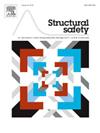Riverine floods have become increasingly prevalent on a global scale, posing significant risks to infrastructure systems and communities. The escalating impacts of climate change associated with the increase in rainfall intensities and frequencies necessitate the improvement of the existing design methodologies to account for the non-stationary climate change effects to ensure that the reliability is above the target level and mitigate future flood disasters. This paper presents a novel LRFD approach for river embankments subjected to extreme rainfall under non-stationary climate change effects. This approach introduces an additional partial factor to account for the effects of climate change. Precipitation and temperature projections are collected from various climate models considering several cases of emission scenarios. An integrated hydrological and hydraulic modeling of the analyzed river is carried out to estimate the associated time-variant river discharge and water surface elevation. The non-stationary extreme value associated with the maximum flood level is leveraged using the peak-over-threshold approach. The embankment reliability and the corresponding most probable points are evaluated using limit states associated with overtopping and slope failures. Based on the estimated and target reliability indexes, the design point for each random variable is assessed considering the cases with and without climate change effects. Finally, the partial factors associated with climate change effects are determined. As an illustrative example, the proposed framework is applied to the Ashida River in Fukuyama city of Japan.


